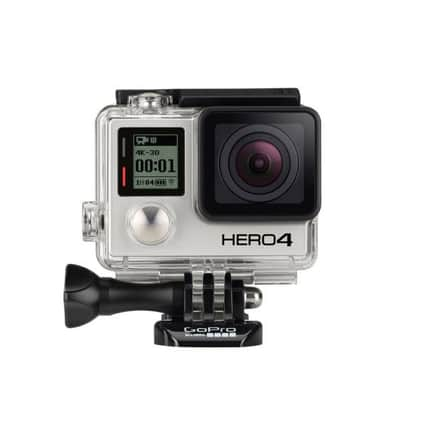Don't try this at home: Best value action cams this autumn


Given such spontaneity, the old workflow of taking your footage home, editing it and then rendering it to a format you can watch on TV seems a decade out of date.
That’s why the market for domestic camcorders has moved almost entirely to a new breed of devices that can go where your phone can’t. These new cameras, with the GoPro range at the vanguard, are aimed squarely at sports people and adventurers, yet they’re also fun for those with a more sedentary lifestyle. Pop one on your dog’s collar and you’ll see the world from a whole new perspective.
Advertisement
Hide AdAdvertisement
Hide AdAction cameras are all about getting the best shot possible - an objective that’s always been at the heart of photography. Unlike conventional camcorders, which tend to be rendered useless if dropped, splashed or ingrained with a little sand, GoPro units are built to be rugged, even if submerged in 30 feet of water.
The number of models on offer has mushroomed in the last year or two, and a genuine GoPro is no longer your only option. Garmin, Sony, Olympus and others offer credible alternatives, and supermarket brands like Polaroid and Vivitar supply plenty of choice at the budget end of the scale.
The two most obvious differences between a camcorder and an action cam are the absence of a zoom lens and, in many cases, a viewfinder or LCD screen. Because these devices are designed to be mounted rather than held - on a helmet, handlebar or surfboard, for instance - you sacrifice a certain amount of interaction. An action cam will typically have a fixed, wide angle lens, be capable of shooting in full HD and sometimes ultra-HD, and come with a range of different mounts - though these may be optional extras.
Cameras are generally either bullet or box-shaped, and your intended use will influence the type you prefer. Bullet-shaped cams are more aerodynamic on a helmet; box-like models are more stable when strapped to your body.
Advertisement
Hide AdAdvertisement
Hide AdBy all means forgo an LCD screen, especially if space is at a premium, but if you do, look for one with wifi connectivity instead. This not only makes it easier to transfer footage but also allows for remote-controlled live view on some models, plus playback and basic editing functions. All the big brands have iPhone and Android apps that pair with the camera.
Pay special attention, too, to the battery life. All action cams are rechargeable but some hold their charge longer than others, and take longer to refuel. The depth to which they are waterproof may also be a consideration for you.
Perhaps the best budget option this autumn is the £150 Olfi One Five camera, which has an LCD screen, shoots in ultra-HD with high dynamic range (HDR) and comes with a waterproof housing that can go down 100 feet. It has gyroscopic stabilisation (so your footage is always the right way up), a motion sensor that can start recording automatically, and will take stills and video simultaneously. Accessories include a £25 remote that can be worn as a wristband.
That’s enough kit to film most of an episode of Top Gear. As they used to say on such shoots: just don’t try it at home.